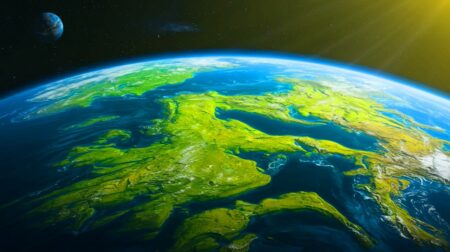Imagine a world where wolves are part of the urban fauna and revived mammoths walk freely in nearby forests. Imagine that such a future is as real as flying cars or humanoid robots, which are just around the corner.
The kind of future described in this scenario derives from a popular concept called “rewilding,” which is aimed at bringing extinct species back from the dead and replanting them in their original habitats or else new ones.
The most conventional way to think of rewilding is to picture large areas of land and water restored to their pristine or near-pristine states and carefully guarded against harmful human interference. Thanks to the restoration of complex trophic cascades, fragmented ecosystems can become full of life again.
The reintroduction of wolves to Yellowstone Park in the US and tree restoration in Glen Moriston, Scotland, are two among the many examples of successful rewilding globally.
The approach is actively practiced and advocated for by Rewilding Europe. Based in the Netherlands, the foundation focuses on “making Europe a wilder place” through building a network of rewilded areas spanning from the Central Apennines to Lapland and the Danube Delta. The foundation also supports rewilding businesses, creating a wildlife bank aimed at increasing populations of keystone species, such as bison and wild horses.
Yet questions remain about how wild can nature really become under attentive human care. When is the right time to step back? And are there unintended consequences that may outweigh the benefits?
More space for restored wildness and wildlife is clearly a good thing, but what’s next? What about our own major habitats, cities? Could we have more nature there too? Many people would be happy with more trees, greener roofs and more harmless animals such as hares and hedgehogs. But what about wolves or bears?
While in a number of cities humans have learned to live with wild species such as macaques in Bangalore or red foxes in Brighton Pier, these cases are usually more an exception than a rule. Many species are still struggling to survive in cities. Baby turtles born in Barbados are unable to make their way towards the sea at night due to intense light pollution from the city. Or take street dogs. Often considered “homeless” stray animals and treated like sources of trouble, they are eliminated from streets.
How do we handle the complexity of interspecies relations in a city?
One starting point could be dedicating large areas within a city to wildlife, in the vein of Nature Boardwalk in the Lincoln Park Zoo in Chicago, where animals roam freely throughout the area with narrow paths for human visitors. Biophilic cities are also redefining what urban habitats may or should be like.
The trick here is that while promoting urban biodiversity, we might also need to change some basic features of our habitat, as well as our mindsets and behaviors. This entails rewilding the human spirit through making people more sensitive towards the living world around them.
According to George Monbiot, a journalist and author of Feral – Rewilding the Land, living life more in tune with nature can help us escape the “ecological boredom” of the contemporary world and feel more alive. We can do this by exploring the possibilities nature holds outside our isolated and often sterile urban realities. We don’t have to give up civilization, but it’s time to expand the natural boundaries of the world we inhabit, Monbiot suggests.
One way to start doing this is to spend more time in the wild. Another one entails exploring approaches for nonviolent communication with animals. We could learn from animal rights advocates and wildlife experts like Jane Goodall, a tireless explorer of the animal world, about how to live in better harmony with wild animals.
By doing so we may not only rewild the human spirit but also restore our microbiome to a much healthier state, new research suggests. Thus, the link between human and planetary health might be much more profound than we often assume.
Finally, there is the Revive and Restore project, the forerunner of technological rewilding, which aims at nothing less than the de-extinction of lost species such as woolly mammoths through genetically combining the DNA of living animals like elephants with DNA retrieved from the remains of extinct species like Siberian mammoths.
Such projects hold out great promise but also raise ethical considerations. And while we are still at the dawn of this project, it is hard to tell where it will lead. How will revived animals experience their new environments and can our world ever be a true new home to them?
Be that as it may, our relationships with the whole wild world will need to be reevaluated for the sake of both us and wild animals.
Did you like it? 4.5/5 (26)









